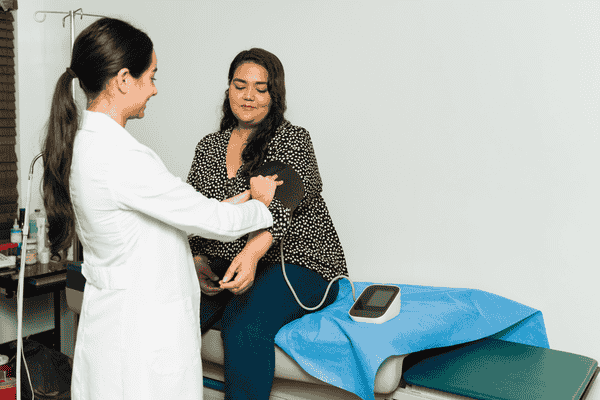Imagine this: You’re at home, caring for your aging mother, and suddenly, you notice a wound on her leg. Perhaps it was a small scrape she got while gardening, or maybe it’s a more serious pressure ulcer from being bedridden. You want to help her heal quickly and comfortably, but you’re unsure of the best way to treat the wound. You’re not alone—many caregivers face similar challenges, and that’s where the importance of proper wound dressing comes in.
This comprehensive guide is here to empower you with the knowledge and skills to handle wound dressing like a pro, ensuring your loved one’s well-being throughout the healing process.
Understanding Wounds
Before diving into wound care, it’s essential to understand what a wound is and the different types you may encounter as a caregiver. A wound is any break or opening in the skin or underlying tissues, usually caused by an injury, surgery, or prolonged pressure. These can vary significantly in severity, from minor abrasions to deep surgical incisions.
Take, for example, the story of Tom and his father, George. George had always been active, but after surgery on his knee, he developed a surgical wound that needed careful attention. Tom found himself suddenly thrust into the role of caregiver, needing to learn the ins and outs of wound care.
Here are some common types of wounds you might encounter:
- Abrasions: These are superficial wounds caused by friction or scraping. Think of the time your grandmother tripped and scraped her knee on the sidewalk. They’re usually painful but not deep.
- Lacerations: Unlike abrasions, lacerations are jagged, irregular cuts that can be deep and may require stitches. Tom had to deal with a laceration when his father accidentally cut his hand while cooking.
- Puncture Wounds: These are caused by a sharp object piercing the skin, like stepping on a nail. Puncture wounds can be deceptive because they often appear small but can be deep, making them prone to infection.
- Pressure Ulcers: Also known as bedsores, these develop when there’s prolonged pressure on the skin, often over bony areas like the hips or heels. They’re common in individuals who are bedridden or use a wheelchair.
- Surgical Wounds: These are incisions made during surgery. Tom’s father had one of these on his knee, requiring meticulous care to prevent infection and promote healing.
By understanding these different types of wounds, you can better assess the situation and apply the appropriate care.
The Stages of Wound Healing
Wound healing is a complex, miraculous process that unfolds in four distinct stages, each playing a critical role in the body’s recovery. As a caregiver, understanding these stages helps you provide the right care at the right time.
- Hemostasis Stage: This is the body’s immediate response to a wound, where blood clots form to stop the bleeding. Picture this stage as the body’s first aid kit, quickly sealing the wound to prevent further damage. In George’s case, after his knee surgery, the doctors ensured that the wound was properly clotted before releasing him from the hospital.
- Inflammatory Stage: Next, the body’s immune system kicks in, sending specialized cells to clean the wound and ward off infection. This stage can be uncomfortable, often accompanied by redness, swelling, and warmth around the wound. Tom noticed these symptoms around his father’s knee, and knowing that it was a normal part of healing helped him stay calm.
- Proliferative Stage: During this phase, the body begins to rebuild. New tissue forms, and the wound starts to close. This is the stage where you, as a caregiver, might see noticeable improvement. For Tom, watching his father’s wound gradually shrink and new skin form was a relief, signaling that the worst was over.
- Maturation Stage: The final stage of healing is all about refinement. The new tissue strengthens and matures, which can take months or even years. By this point, George’s knee had mostly healed, but Tom continued to monitor it, ensuring the skin remained healthy and free from complications.
Understanding these stages helps caregivers like you and Tom gauge healing progress and know when something might be wrong, such as if the wound stops healing or shows signs of infection.
Treatment and Care for Wounds
Caring for a wound involves more than just slapping on a bandage and calling it a day. It requires thoughtful attention to detail, cleanliness, and an understanding of how to support the body’s natural healing processes. Let’s walk through the essential steps:
- Cleaning the Wound:Start by washing your hands thoroughly. The last thing you want is to introduce bacteria to the wound. Use clean water or a mild saline solution to gently clean the area. Avoid harsh antiseptics like alcohol, which can irritate the skin and delay healing.Tom learned this the hard way when he initially used a strong antiseptic on his father’s knee, only to find that it caused more discomfort. Switching to a gentle saline solution made a significant difference.
- Applying Wound Dressings:Selecting the right dressing is crucial. Here’s a quick guide:
- Non-adhesive dressings are great for wounds with minimal drainage.
- Adhesive dressings work well for wounds with moderate to heavy drainage.
- Hydrogel dressings add moisture to wounds that are too dry.
- Alginate dressings are highly absorbent, perfect for wounds with heavy drainage.
- Monitoring the Wound:Regularly check the wound for signs of infection, like increased redness, swelling, or pus. Also, watch for signs of healing, such as reduced pain and the formation of healthy tissue.Tom kept a daily log of his father’s wound, noting any changes. This practice not only helped him track progress but also provided valuable information to the healthcare provider during check-ups.
- Managing Pain:Pain management is essential for comfort. Over-the-counter pain relievers can help, but always consult with a healthcare professional before giving any medication.Topical pain relief creams can also be applied to the wound to provide localized relief, which Tom used when his father’s knee felt particularly sore.
- Promoting Healthy Habits:Encourage your loved one to maintain a balanced diet rich in protein, vitamins, and minerals. Proper nutrition supports tissue repair and speeds up healing.Tom made sure his father had plenty of fruits, vegetables, and lean proteins, knowing that good nutrition was key to recovery.
Essential Wound Dressings at Home
Choosing the right wound dressing is like picking the right tool for a job. The right dressing not only protects the wound but also creates the optimal environment for healing. Let’s look at some common wound dressings you can use at home:
- Non-Adherent Dressings:These are gentle and ideal for superficial wounds. They don’t stick to the wound, making them perfect for those painful abrasions or minor burns your loved one might get while moving around the house.
- Hydrocolloid Dressings:Hydrocolloid dressings are great for wounds with minimal to moderate drainage. They create a moist environment that promotes healing and are particularly useful for wounds that need a bit of extra protection.Tom used these for his father’s knee wound, appreciating how they stayed in place and didn’t need frequent changing.
- Alginate Dressings:Made from seaweed fibers, alginate dressings are highly absorbent and ideal for wounds with heavy drainage. They form a gel-like consistency when in contact with wound fluid, helping to keep the area clean and protected.
- Foam Dressings:These are another option for wounds with moderate to heavy drainage. They provide cushioning, making them suitable for wounds in areas prone to pressure or movement.
- Transparent Film Dressings:These are thin, adhesive dressings that act as a barrier against contaminants while allowing you to see the wound without removing the dressing. They’re great for minor cuts or abrasions that need to be protected from dirt but still need observation.
- Compression Bandages:If you’re dealing with a wound like a venous ulcer, compression bandages can help improve circulation and support healing. Just be sure to apply them carefully, following professional advice to avoid restricting blood flow.
Nursing Care Tips for Wound Management
Proper wound care isn’t just about what you do directly to the wound—it’s also about the environment and overall care you provide. Here are some tips to help you excel in wound management:
- Maintain Cleanliness:Always wash your hands before and after wound care. Use sterile gloves to prevent infection, and keep the wound area as clean as possible.
- Dress and Bandage Properly:Ensure that dressings are applied securely but not too tightly. Change them as recommended, or whenever they become soiled or wet.
- Monitor Progress:Keep track of the wound’s healing by noting any changes. Taking photos can be a helpful way to document progress and share with healthcare professionals.
- Encourage Good Nutrition:A balanced diet rich in protein, vitamins, and minerals supports the body’s healing processes. Ensure your loved one stays hydrated and eats well.
- Foster Emotional Well-Being:Wound care can be stressful for both the caregiver and the patient. Provide emotional support and reassurance to your loved one, helping them stay positive throughout the healing journey.
- Seek Professional Help When Needed:Don’t hesitate to consult a healthcare professional if you’re unsure about how to care for a wound or if you notice any signs of complications.
Tom found that by staying informed and involved in his father’s wound care, he could make a significant impact on his recovery. By following these tips, you too can help your loved one heal faster and more comfortably.
Conclusion
Caring for a loved one’s wounds can be daunting, but with the right knowledge and tools, you can handle it with confidence. From understanding the stages of healing to selecting the appropriate wound dressings and providing holistic care, every step you take makes a difference in the recovery process.
Remember, you’re not alone on this journey—whether it’s a minor cut or a more severe wound, countless caregivers like Tom are navigating similar challenges. By educating yourself and approaching wound care with care and compassion, you can ensure your loved one’s well-being and contribute to their healing process.













